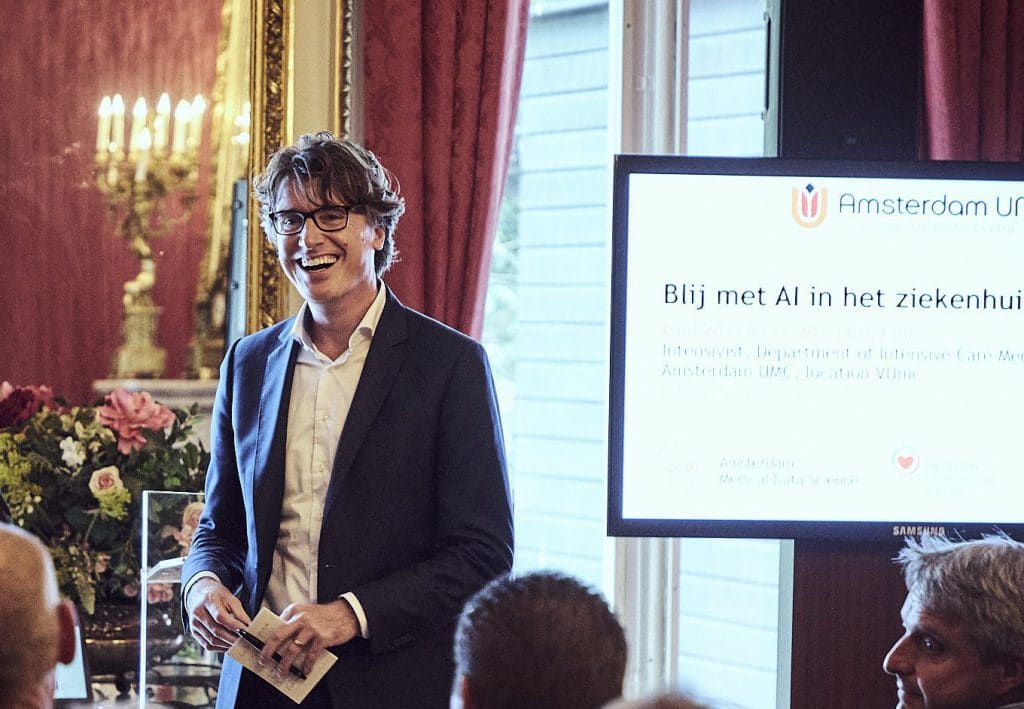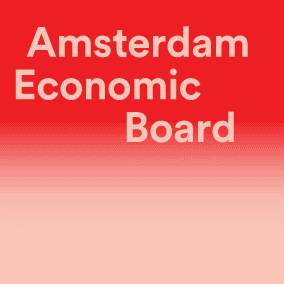Why the Netherlands needs a single health data infrastructure – now
The scientific method works…
Medical science has come very far. We can now slow, stop, treat, cure and prevent an array of once deadly diseases. Our diagnoses and treatments are becoming more reliable. And this has all been made possible by collecting and analysing the medical data of many different individuals.
Just look at the inspiring work of Dr John Snow who followed patient data to correctly deduce the way cholera was spreading in 1850s London – and thereby essentially founding both epidemiology and the use of modern statistics in health. In short: all the recorded data of all the people, their treatments and the resulting effects led to the state of medicine we have today.
But medical research is a slow, painstaking process: you need to find the right patients, a comparable control group, establish baselines and timelines, and determine the results. Then you have to do it all over again to verify the results. As a result, a trial involving only a few thousand people can easily take over four or five years.
07-07-2020
But it’s also unfair…
Even if a research project is verified, the results only apply to a certain small group. Why? Because to be sure of the results of a certain intervention you need to test it on a relatively homogenous group that you can split into two, and treat differently to see the contrast in effects. Meanwhile, our statistical methods deliver better and more consistent results with larger test groups.
Unfortunately, for a whole range of reasons, certain groups – such as women – are underrepresented in these test groups. This results in medical protocols that may work less well for them. One example is the identification of heart conditions in women. To compensate, we would have to set up separate trials for every under-represented group – which has been impossible in terms of time, money and subjects.
But now we can!
Accelerating the miraculous
With a national integrated health data infrastructure, which makes data accessible to those responsible parties seeking AI solutions, we can improve patient care, public health, disease prevention and economic impact – speeding up medical developments by an estimated 10 to 12 years.
It sounds impossible, but it’s not. We have the data, the intelligence and the public’s willingness to share for a greater good.
No more excuses
For years we’ve heard many reasonable excuses about why we can’t develop this integrated data infrastructure, including very legitimate privacy concerns, less legitimate technological limitations and a heterogenous Dutch healthcare system. But for the past few years, many parties have been working hard to tackle these issues.
As it turns out, the tech isn’t the main problem. The challenges are more in the ethical and judicial issues, the setting up of partnerships, and incorporating different views (technical, medical, legal, governance, etc) into the process.
However, even alone, Amsterdam has access to many of the required moving parts to bring it to the national level: an ethical data stewardship infrastructure, brainpower, testing grounds, engaged policymakers. Stakeholders are also aware that these innovations involve a delicate dance between private and public entities. We even have a large and intense rainbow of like-minded startups.
Plus, the global pandemic is galvanizing the life sciences and health sector. With the COVID-19 crisis, the industry’s public, private and policy players have come together under this single issue, not only in the Netherlands but all over the world.

Jeroen Maas explaining the latest development in data- and AI-driven innovation in Amsterdam’s life sciences and health sector. © brenda de vries 2019
COVID-19 unites
In the face of a common challenge every hospital in the Netherlands is now sharing anonymised data about coronavirus patients. It was challenging, with conflicting and dirty data sets, but it happened. And it could have a profoundly positive effect on patient care and managing a potential second wave.
Such collaborations are inevitable – the potential is just too great to be ignored. But for the fragmented healthcare structures in the Netherlands, these projects were taking years to properly set up. Now it’s happened in mere months. Now we should harness the momentum and keep pushing forward.
Eight reasons why we need one integrated health data infrastructure
There are many reasons why setting up a unified health data infrastructure is beneficial to all. Each one addresses every aspect of the ‘quadruple aim’: enhancing patient experience, improving health outcomes, reducing costs, and improving the work life of care providers. It would also cost a fraction of the annual Dutch cure and care investment of 100 billion euros. As shining example: AP-HP in Paris managed to implement their ambitious and effective system for only 18 euros a patient.
- Replacing an antiquated patient information system
In 2019, it’s estimated that a mind-boggling 1.4 million patient DVDs were transferred between Dutch healthcare facilities. This data then needs to be added to another system, often resulting in information being lost or distorted. Many diagnostic tests and intakes need to be repeated. And when lacking information, doctors have a larger chance of prescribing the wrong medicine (an estimated 5-10% of all emergency room intakes is related to medication). - Applying AI to improve patient care
Amsterdam UMC is already applying AI in its intensive care unit. And with a better data infrastructure, we can apply AI to other fields – from early and better diagnosis to treatment planning. More data also means it’s easier to predict the best treatment for a patient. - Better promotion of public health
A big question needing big data: What do certain groups need to stay healthier for longer? How can we best identify and support those groups? For example, Latvia actively approaches members of such groups. In the process of finding solutions, we must always remember that heath interventions are not one-size-fits-all, and with better data and tools we can implement better, evidence-based interventions. - Development of precision medicine (a.k.a personalised medicine)
We already have 15 years’ worth of longitudinal data on millions of Dutch citizens. If accessed, we can apply data science and AI tools to make medicine more personal. That means the potential to improve the identification of heart conditions in women, or improving outcomes by individualising antibiotic dosage – something Amsterdam medical data specialist Pacmed recently showed with its work treating urinary infections. - Early diagnosis
There’s a certain point where people go to the doctor. But that’s usually only when symptoms become too severe – and with cancer, that could be too late. Using AI, we can potentially enter the zone before people go to the doctor by finding indicators that denote disease development. One example of this is Breathomix, which has developed tech that can detect cancers in exhaled air years before any symptoms arise. - Logistical support
If we can see something coming, we can prepare ourselves. For example, Amsterdam UMC already uses predictive modelling when planning the weekend rosters of its healthcare workers, based on historical medical data, weather and activity calendars. More recently, www.windfall.ai is currently under development to predict new COVID-19 cases, as well as hospital admission and death rates, for the coming four days in very localised areas. - Derived medical efforts such as pharmacovigilance and drug development
Many medicines don’t work for all patients – that’s important. Also, the interactions between different medicines can sometimes have serious side-effects. But it’s impossible to cross-test the thousands of different medicines currently on the market. However, we do have data on people who take different medicines. This can also tell us which products worked best and with the least side-effects – thereby accelerating the development of new medicines. - The kicker: prevention
Prevention is notoriously hard to work on since long-term preventive interventions are so hard to prove. Just look at how long it took to scientifically establish the relationship between smoking and lung cancer. With the available 15 years of longitudinal data from millions of Dutch inhabitants, we can look for patterns years before certain diseases develop, which can be investigated for their potential for prevention – plus, we would be able to statistically prove the value of these preventive measures.
The time for a single health data infrastructure is now
While establishing a single data infrastructure remains ambitious, we are optimistic. After all, we recognise the problem, we have the people who can solve it and the zeitgeist seems to be with us. And, data can help save lives. It’s that simple.
Trust remains essential. But in the Netherlands we already have the technical infrastructure that can deal with big data in an efficient and ethical way. And people are usually only too willing to share their own personal data if they know it’s for the greater public good.
There are few other places outside of the Netherlands where this would be possible. For example, in the USA, companies can just buy data outright. In China, the government has complete control of the data.
I believe that in the Netherlands – and this is also true for many other European countries – there’s a recognition across government, industry, healthcare providers and insurers that the FAIR sharing of medical data is in everyone’s best interest.
Medical data is one of the few arenas where personal interest meets public interest. It’s time for action. It’s time for leaders to stand up and focus energy and money to build the actual roads. So, here in the Netherlands, let’s be the pioneers. Let’s lead the way and help educate the rest of the world. A single data infrastructure starts here. Let’s revolutionise healthcare – for the benefit of all.
Interested? Do you want to contribute? Share this article, see what your organization can bring to the table or contact Jeroen Maas.
If you want to receive updates you are invited to join Smart Health Amsterdam. It is the network for data- and AI-driven innovation in Amsterdam’s life sciences and health sector. Join the community here.
With a safe and unified health data infrastructure for the Netherlands, we can apply AI to streamline healthcare for the benefit of patients and extend the average healthy lifespan of our citizens. The coronavirus crisis has highlighted that we already have the technology and partnerships in place to make it happen. So, what are we waiting for?
7 juli 2020
Meer weten over
Neem contact op
Blijf jij ook op de hoogte?
8x per jaar nieuws en events uit de regio: schrijf je in voor de Board Update nieuwsbrief
Deel dit artikel
Wil je op de hoogte blijven?
Volg ons dagelijks op LinkedIn en schrijf je in voor de Board Update nieuwsbrief.
Lees ook deze berichten
- Welke AI-toepassingen zetten we al in voor zorg- en welzijn? Wat is ...
- Adyen is een van de grote succesverhalen van het Amsterdamse tech-ecosysteem. Als ...
- Samen met bevlogen partners bouwt Amsterdam Economic Board in drie coalities aan ...

